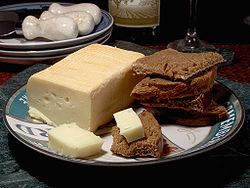
Cheeses have played a significant role in German cuisine, both historically and in contemporary times. Cheeses are incorporated in the preparation of various dishes in German cuisine. [1] Germany's cheese production comprises approximately one-third of the total for all European-produced cheeses. [1]








